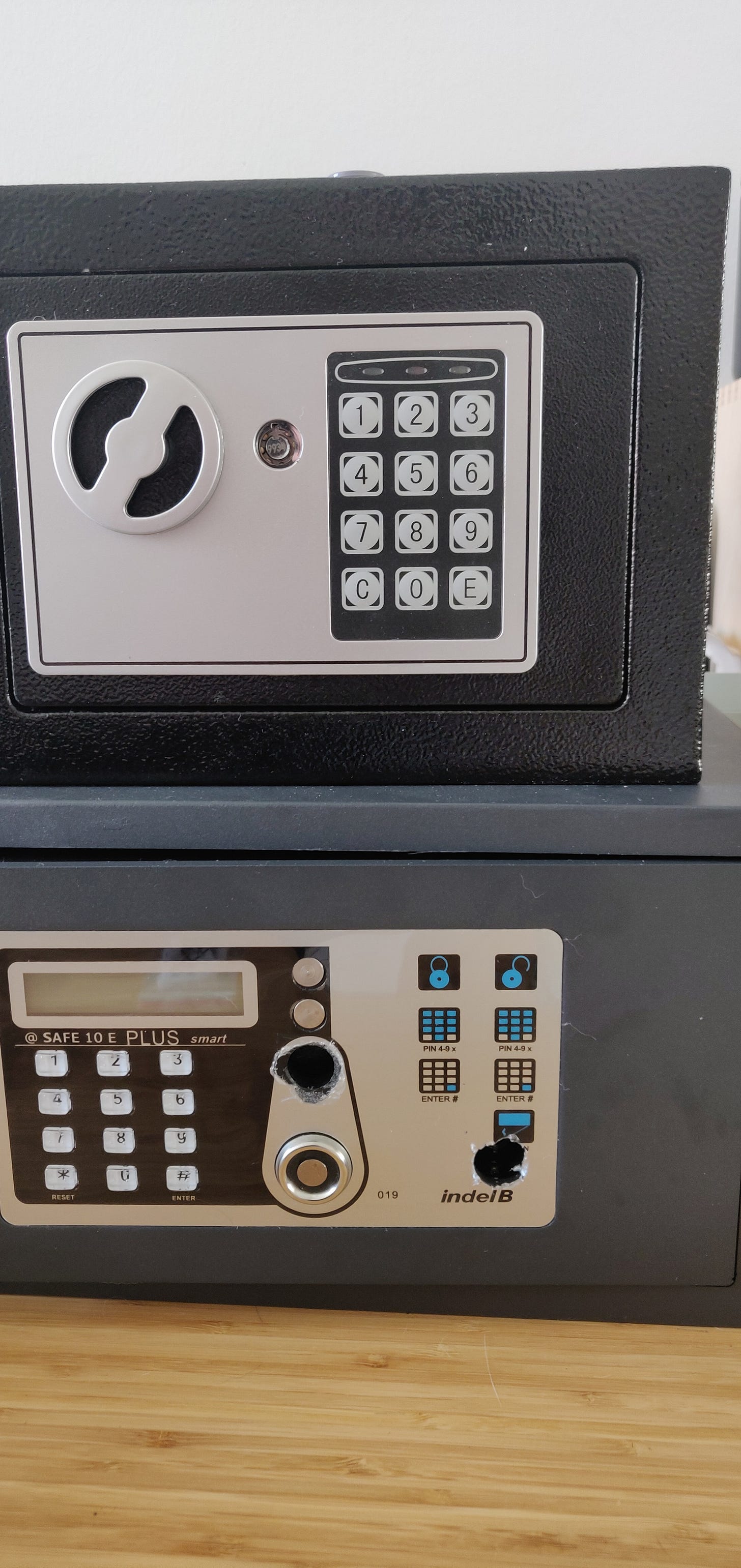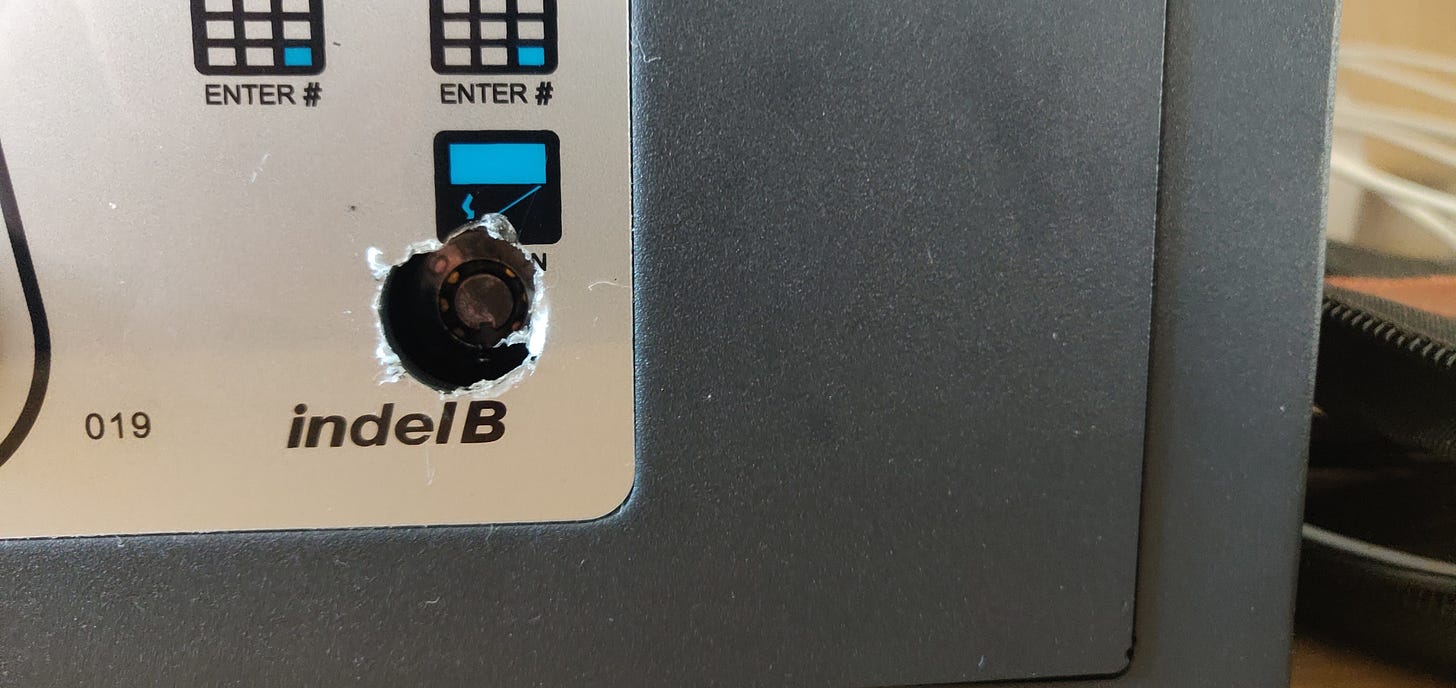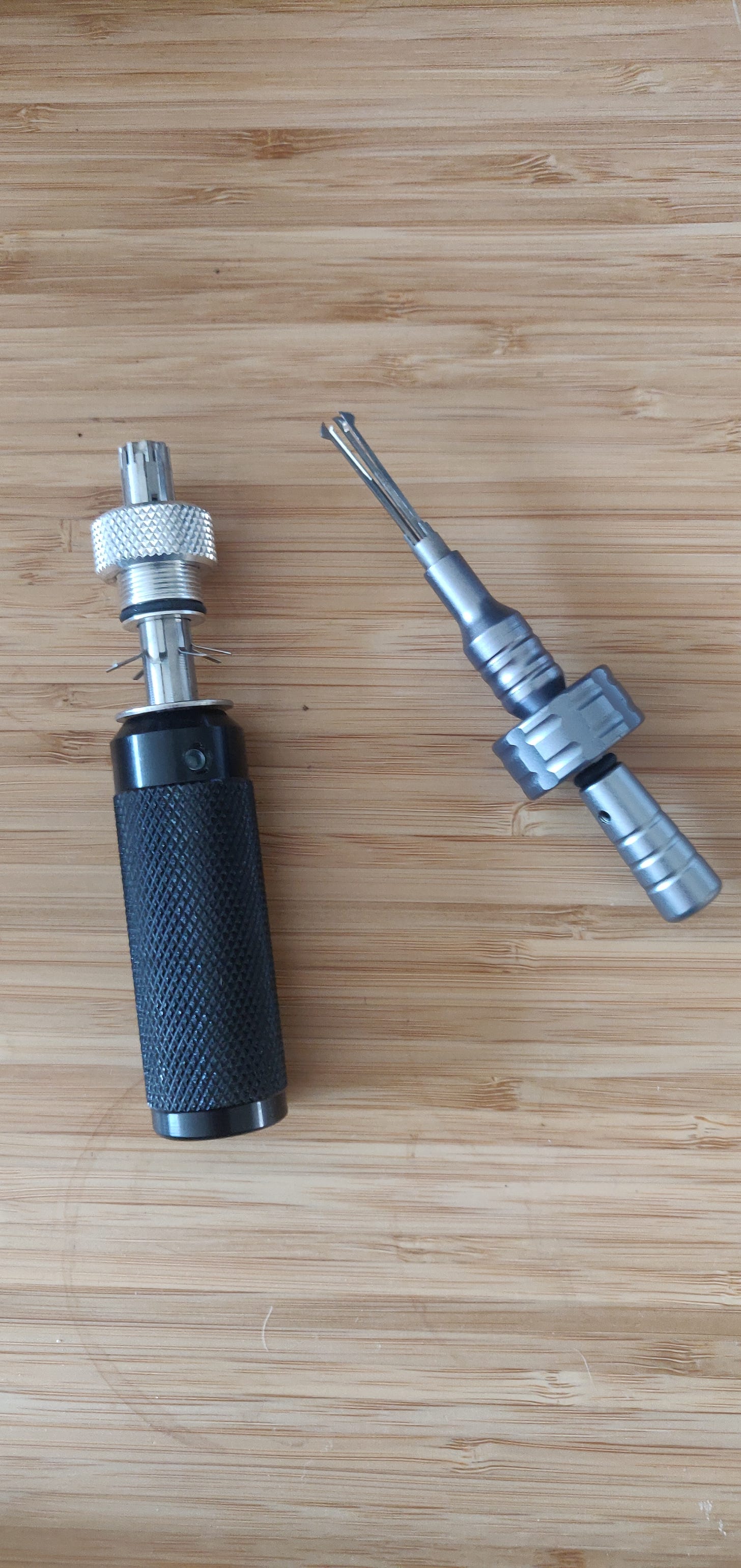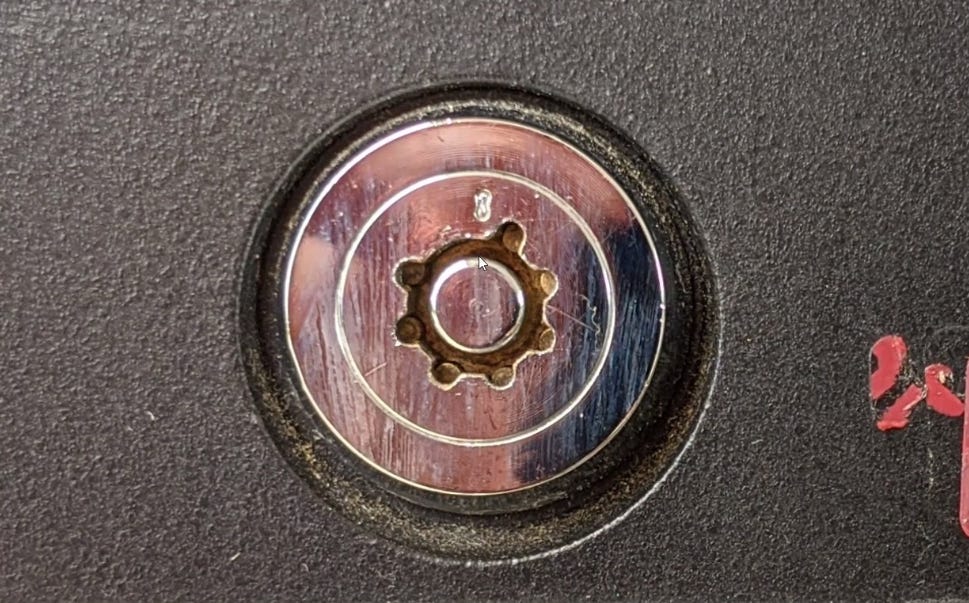In the realm of physical security, safes have been an age-old method of safeguarding valuables. With the dawn of technology, electronic safes have been touted as the future of personal and commercial security, promising a combination of digital convenience and impenetrable fortitude. However, many people remain unaware of a significant vulnerability that exists in a vast majority of electronic safes: the mechanical override.
Understanding Mechanical Overrides
To ensure access to the safe even in the event of an electronic failure—be it dead batteries, malfunctions, or forgotten codes—manufacturers incorporate a mechanical override feature. This is essentially a backup key system that can bypass the electronic mechanisms.
When looking at an electronic safe, the easiest way to find the mechanical override is usually to look for a sticker / cap / or something that is obviously covering a small hole usually about the size a small coin.
In some cases, the hole you are looking for will be covered with a hardened sticker that has info about the safe on it, in which case you will likely need to cut it away, and locating this specific spot can be tricky … Googling the manual is a quick way to pinpoint its location. BUT because a lot of these safes are of “the best Chinese quality” the manual may not always be correct and you may need to go fishing.
The Vulnerability: Common Mechanical Locks
The above image is of a tublar lockpick (left) and cross lockpick (right). While they may look odd and possibility intimidating tools, after 10 min of practice most students are breaking into both style of locks quickly and easily.
Despite the sophisticated electronic security features, it's paradoxical how often these mechanical overrides employ basic, widely-used lock systems. Two of the most common locks used are:
Tubular locks:
Recognized by their circular keyway and pins arranged in a circle, these locks were once believed to be more secure than conventional pin tumbler locks. However, with specialized tubular lock picks available in the market, they can be surprisingly easy to pick for someone with a bit of knowledge and practice.
Cross (cruciform) locks:
These locks have a unique keyway shaped like a cross, requiring a key that looks somewhat like a plus sign. While they might look complicated, they're not significantly more secure than standard locks. Expert lockpickers with the right tools can overcome these in a short amount of time.
The Irony: Sophisticated Electronics but Simple Mechanicals
The irony is palpable. Individuals purchase electronic safes under the belief that they are acquiring advanced protection, and yet the mechanical backup, designed for convenience, can easily become the safe's Achilles heel. It's analogous to investing in an advanced security system for your home but leaving a spare key under the doormat.
Why Relying Solely on Safes Can Be a Misstep
Understanding this vulnerability, one might realize that storing high-value items in safes isn't always the best idea. While it provides a first line of defense and deters opportunistic thefts:
Complacency: Owners can become over-reliant on safes, overlooking other essential security measures.
Targeting: A visible safe can make your property a target. If burglars are aware of the mechanical weaknesses, it could be a matter of minutes before your valuables are compromised.
Read the Manual
A quick note that every safe will have a manual, and every electronic safe will have an emergency master pin code. If for whatever reason you either can’t use the mechanical override to get into the safe, or you don’t have the right tools in the moment, don’t forget to simply google the safe and its model number. Chances are the manual PDF will be online and within will possibly be the emergency override code for the electronic pad.
Conclusion: A Multi-Layered Approach to Security
Does this mean electronic safes are useless? Absolutely not. However, it is vital to understand their limitations and vulnerabilities. The best security approach is multi-layered. While a safe can be a part of your security strategy, it should be complemented with other measures such as surveillance cameras, alarm systems, and even diversifying the locations where valuables are stored.
Always remember: in security, there's no silver bullet. It’s all about layers, and understanding that every measure, no matter how advanced, has its vulnerabilities. Knowing them is the first step to effectively guarding against them.
Training Resources:
For individuals looking for a hands on training that includes all of the above topics, Covert Access Team (covertaccessteam.com) provides training courses focused on physical penetration testing, lockpicking, bypassing techniques, social engineering and other essential skills.
Covert Access Training - 5 day hands on course designed to train individuals and groups to become Covert Entry Specialists
Elicitation Toolbox Course - 2 day course of that primarily focuses on elicitation and social engineering as critical aspects of Black Teaming
Cyber Bootcamp for Black Teams - 2 day course designed explicitly for physical penetration testers who need vital cyber skills to add to their toolbox.










